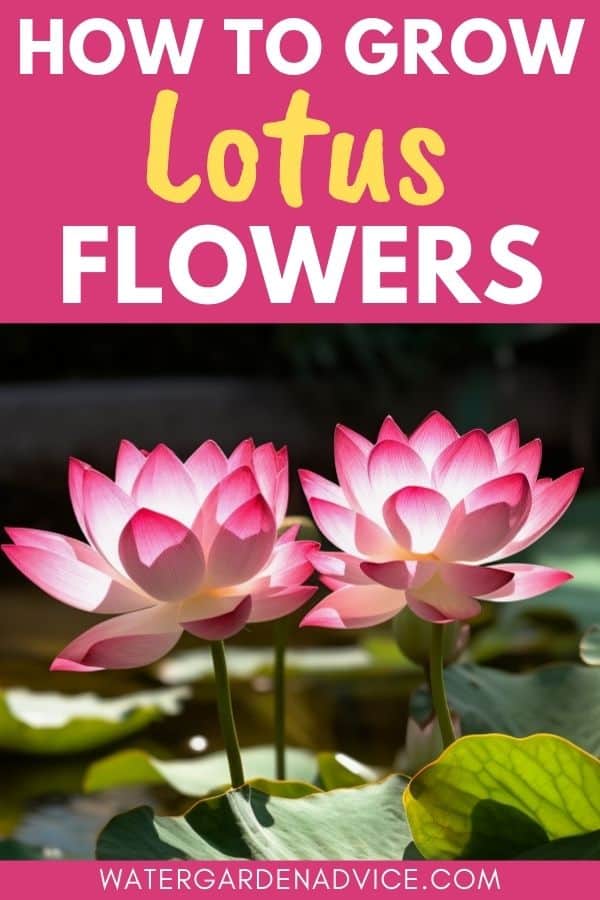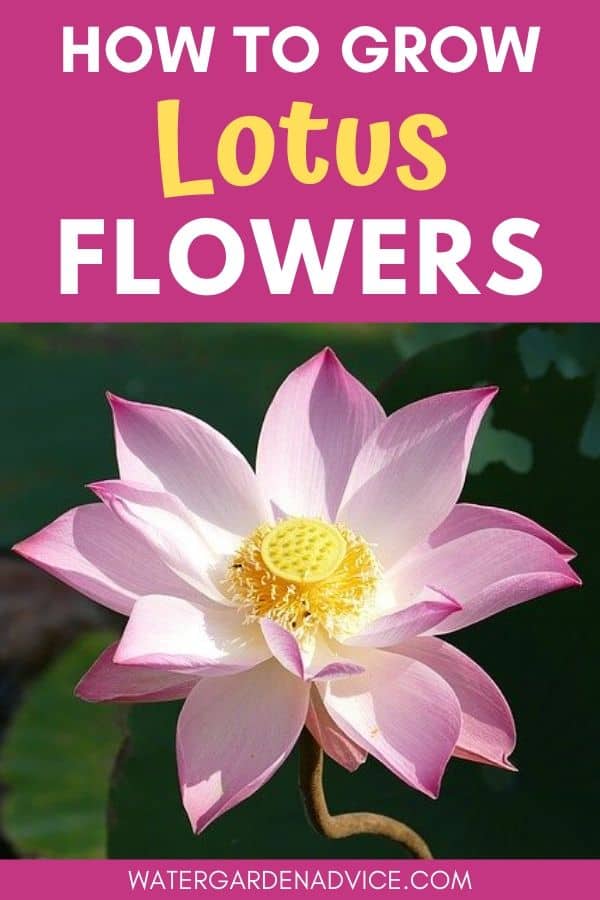Lotus are one of the most popular flowering pond plants with beautiful pink or white flowers that rise above the water.
Growing Lotuses isn’t difficult and with these simple tips you can have gorgeous Lotus flowers growing in your pond or water garden.
This post about growing Lotus plants contains affiliate links. Please read the disclosure for more info.
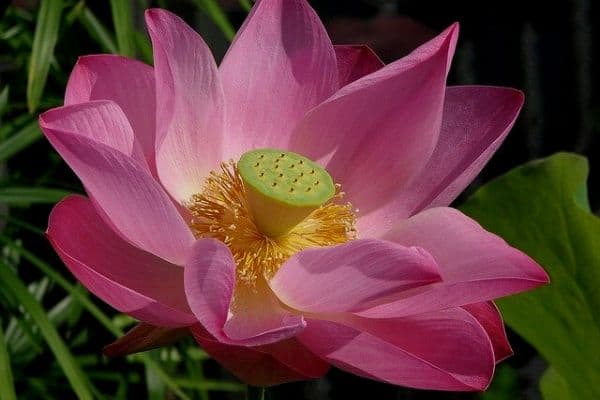
Lotus (Nelumbo nucifera) also known as Indian Lotus and Sacred Lotus, is the national flower of Vietnam and India. [1]
There are two types of Lotus plants – perennial and tropical varieties.
Perennial Lotus becomes dormant during the winter months and comes back in spring and tropical Lotus grows year round.
If you don’t have a backyard pond, you can grow Lotus flowers in an above ground water garden, half wine barrel
or even an old bathtub.
When do Lotus flowers bloom?
Lotus plants bloom later in the season than water lilies, usually from summer until fall.
They need several weeks of warm, sunny weather before they begin to flower.
Each flower only lasts for a few days, but the plants produce an abundance of flowers.
Lotus flowers are most commonly pink or white, but there are also yellow varieties available.
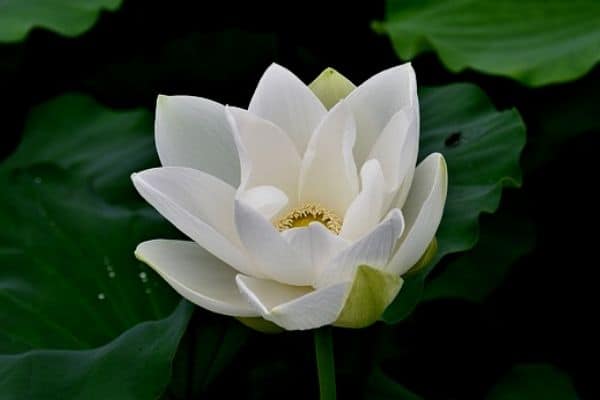
How much sunlight do Lotus plants need?
Lotus need at least 6 hours of sunlight each day to produce flowers.
If your pond is heavily shaded, you’ll need to cut back any overhanging branches to allow the sun to shine through, or plant your Lotuses in a patio pond in a sunny spot.
Where do Lotus plants grow?
Lotus plants grow in many different countries including India, China, Vietnam, Australia and the USA.
Perennial Lotuses will grow in most areas with warm summer temperatures but they don’t do well with large temperatures fluctuations.
How to grow Lotus flowers from tubers
Lotus tubers need to be stored in a warm place that is at least 70 degrees Fahrenheit (21 degrees Celsius).
The tubers are delicate, so you need to take care when handling them that you don’t damage the tips, which is where the new growth comes from.
To plant the tubers, place about 2 inches (5 cm) of sand in the bottom of a pot and then add some soil (heavy clay soil is best).
It’s not a good idea to use potting mix because it’s too light and will float away when you place the pot in the pond.
Place the tuber in the pot with the tips facing up and gently cover it with soil.
Thoroughly water the pot and place it in a warm spot. You can sit the pot on a heated mat if your house is a bit cool.
You can place the pot in your pond when the plant has a few leaves and the pond water is warm enough.
The water should cover the entire pot but the leaves need to be above the surface of the water.
If you have a waterfall or fountain in your pond you’ll need to place your Lotus far enough away so that the water doesn’t splash on the leaves.
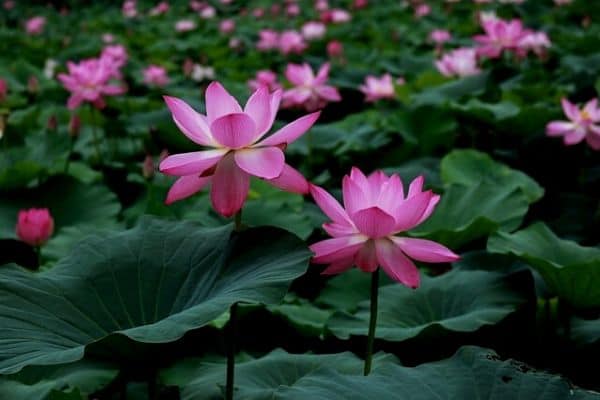
How to grow Lotus from seed
To grow Lotus plants from seed you’ll need to scrape off a tiny part of the seed coating to reveal the core of the seed.
You can use a nail file or a piece of sandpaper to gently remove a couple of millimetres of the hard seed coating, but take care not to damage the core of the seed.
Soak the seed in warm water and change the water each day until the seed begins to sprout.
You can then plant the seedling in a container and put it in a sunny spot until it’s ready to place in the pond.
Lotus plants grown from seed generally don’t bloom in the first year because the plant’s energy is focused on making tubers underground.
Fertilizing
It’s important to wait until the plant has a few aerial leaves rising out of the water before fertilizing.
(Aerial leaves are different to coin leaves, which are the first small leaves that sit on the surface of the water).
Start with a small dose of aquatic plant food. I like these tablets that you can push into the soil.
If the leaves are turning yellow, it may be a sign that the plant needs more fertilizer.
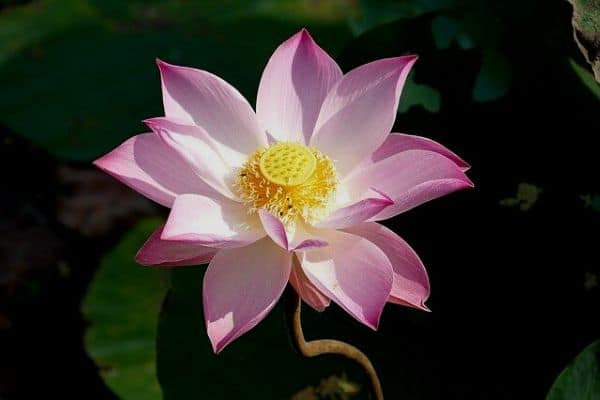
Overwintering Lotus plants
When the weather starts to cool down, cut back any leaves that are dying off and submerge the pots in a deep section of the pond where the water will be warmer over winter.
They’ll survive the winter as long as the tubers don’t freeze.
If you live in a very cold climate, you may need to install a pond heater to prevent the pond water freezing or you could move the plants into a heated garage for the winter months.
Repotting Lotus plants
To keep your Lotus plants healthy they’ll need to be repotted every couple of years.
Pull the pot out of the pond and remove it from the container.
Remove any old dead parts and replant the new white tubers.
How to eat Lotus
Lotus roots, leaves and seeds are edible.
The root can be sliced thinly and added to stir fries, soups or salads.
Lotus seeds can be roasted and the leaves can be used to wrap foods.
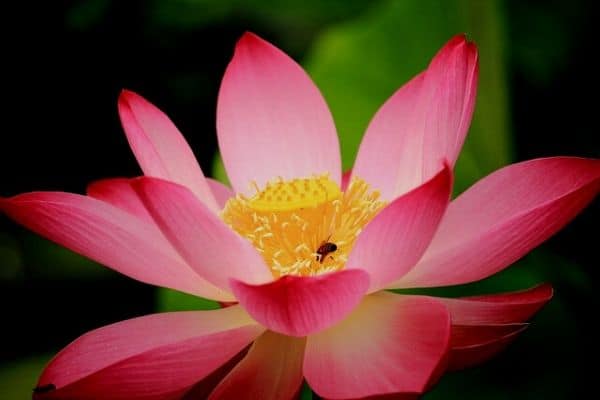
So there are my tips for growing Lotus flowers in a pond or water garden.
With the right care, you can enjoy beautiful Lotus plants in your pond for many years to come.
RELATED ARTICLES
- How To Overwinter Pond Plants
- 10 Best Bog Plants For Ponds
- 10 Flowering Pond Plants
- 6 Edible Water Plants
- How To Grow Water Hyacinth Flowers
Have you tried growing Lotus flowers? Let me know in the comments below.
Are you on Pinterest? I have boards dedicated to Pond Plants and Water Gardens that you may find interesting.
